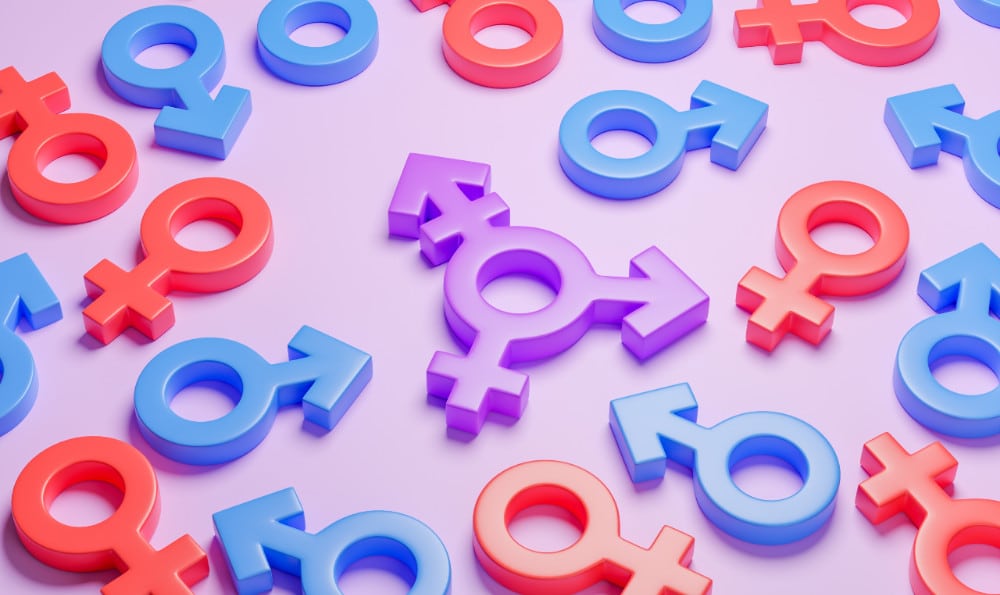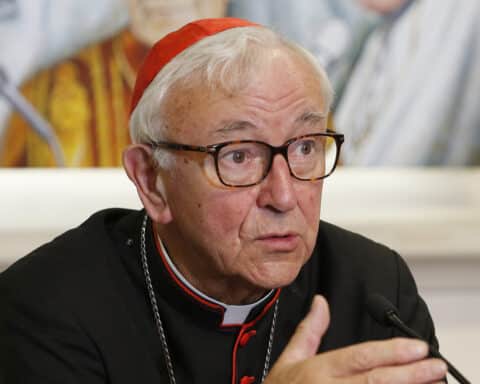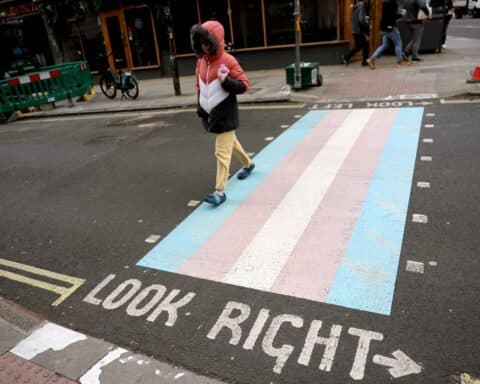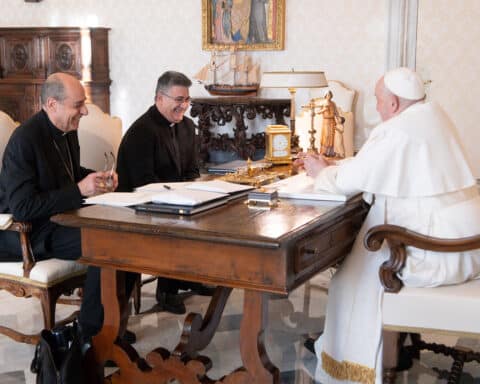It’s Pride Month, and controversies over gender ideology are raging. The release of the documentary “What Is a Woman?” by Catholic political commentator Matt Walsh is causing a stir, revealing deeply disturbing facts about the dangers of pediatric gender transitions. These dangers are the reasons states such as Arkansas, Ohio and Florida are moving toward bans of pediatric “gender affirming” care, with Texas even attempting to prosecute some cases as child abuse. Meanwhile, respected professors argue that these moves to protect children are an “affront to science and medical ethics.” Canadian parents face jail time for “misgendering” their children, a crime classified as domestic abuse, and legislation in France could see parents losing custody of their children for opposing a child’s gender transition.
In the midst of this polarizing and deeply important debate, many Catholics wonder what the Church has to say on these issues.
What the Church teaches
“Male and Female He Created Them,” by the Vatican’s Congregation for Catholic Education, is the most recent magisterial document to address gender ideology. The 2019 document offers guidance for schools navigating the clash of postmodern gender ideology with the Church’s teachings on the reality of biological sex as the foundation of our God-given identity. The document critiques society’s dualistic tendency to separate the body from the self, arguing that we are called to accept and embrace ourselves as God has made us.

Our contemporary cultural narrative asserts that biological sex differs from the social construct of gender, and that gender consists merely in the way we have been socialized to behave. If that is true, then gender identity is nothing more than the constellation of cultural associations surrounding the ideas of “man” and “woman.” This is problematic for many reasons, but central among them is the fact that it reduces the concepts of “man” and “woman” to stereotypes: Men are rational and aggressive, while women are emotional and like to shop, etc. The postmodern view of identity is one in which we create ourselves in our own image; individuals “identify themselves” with whichever constellation of ideas resonates most.
The Christian view is entirely different. Gender ideology seeks to impose individual will on the physical world and the social arena. As Christians, we understand that we receive our identity as a gift from God. Identity is partially revealed to us through the physical world as well as in our relationships with others. Genesis tells us that we are created male and female in the image and likeness of the Trinity. As St. Pope John Paul II was fond of quoting, “Man … cannot fully find himself except through a sincere gift of himself” (Gaudium et Spes, No. 24). We do not become who we are by declaring it in isolation; we belong to God and to one another.
As Father Mike Schmitz argues, when perception and reality don’t match, it is our perception that needs changing. In his video on transgenderism, Father Schmitz compares the condition of gender dysphoria to other types of body dysmorphia such as anorexia, pointing out that “affirming” these beliefs harms the body. What we are called to affirm for one another is reality. Our biology should therefore be embraced, not ignored. The mutilation of healthy bodies is never appropriate, and therefore “solutions” such as sexual reassignment surgery, which remove and rearrange healthy bodily tissue in order to approximate the appearance of a differently shaped body, are contrary to our call to accept and love ourselves as God made us.
How to treat transgender persons
We are called to treat transgender persons as all whom we encounter: with respect and dignity, in a spirit of love. We are to witness to the dignity of the other, even when the individual undermines her own. This is why we prohibit activities such as drug use and prostitution.
Still, as the adage goes, people don’t care what you know unless they know that you care. Christopher West, president of the Theology of the Body Institute, advises that while it is generally best to “communicate using someone’s God-given bodily identity,” there may be exceptions. In a pastoral context, “patient endurance of another’s errors” (distinct from acceptance or embrace of those errors), may be appropriate and helpful.
In other words, we are called to speak the truth in love. We do not want to be St. Paul’s proverbial clanging cymbal any more than we want to hide our faith under a bushel barrel. Different contexts call for different types of witness. We must balance our prophetic call to proclaim the truth with Christ’s central call to love one another. In an age where we appear to have lost the art of dialogue, where opposing views cause some to flee for “safe spaces,” we have our work cut out for us. (Bishop Robert Barron offered some helpful suggestions for cultivating dialogue on contentious issues at a 2017 talk at Facebook headquarters that may be of interest.)
How to respond to children seeking gender ‘affirmation’
Perhaps the most contentious issue at stake in the current uproar over gender identity is the proper response to the rapidly growing population of children who identify as transgender. Of course parents desire deeply to love their children and do what is best for them, but that is becoming increasingly murky in an age when politicians and medical “experts” argue that parents have no choice or, at best, have the choice between a “living son or a dead daughter,” as the narrative goes.
This emotional blackmail presents a false dichotomy, one that is not rooted in truth or sound science. Despite the rapid proliferation of gender clinics and recommended treatment protocols from medical organizations, the fact is that this generation of children is a science experiment. The use of “puberty blockers” and cross-sex hormones for pediatric medical transition is considered “off label” and has not been approved by the FDA. We do not yet know what long-term use of these types of interventions will mean for the children receiving these treatments.
What we do know about their side effects is troubling, including increased aggression, loss of bone density, increased risk of blood clots, premature brain aging, future infertility and increased risk of heart disease. Given that symptoms of gender dysphoria are likely to resolve on their own in 93% of these children by the time they reach adulthood (or even earlier), a risk/benefit analysis fails to offer any compelling reason to support gender transition for minors — especially when recent studies show that contrary to the claims of transition advocates, access to these drugs appears to increase child suicide rates, not decrease them, a finding that is consistent with research showing that the suicide risk is exponentially higher for adults in the seven to 10 years following transition.
Our children need us to listen to them, to accompany them and to guide them. The best way to guide them is to teach them to know, love and trust God, and that means trusting in the plan he has revealed to us in the gift of our bodies. “Affirming” our children should not mean agreeing that something is wrong with their healthy bodies, nor should it mean doing irreversible damage to those bodies. If we are called to “affirm” anything, it is their goodness and the goodness of their bodies, exactly the way God made them.
Samantha Stephenson is a writer and host of “Brave New Us,” a podcast that explores bioethics and motherhood through the lens of faith. She writes from Idaho.





